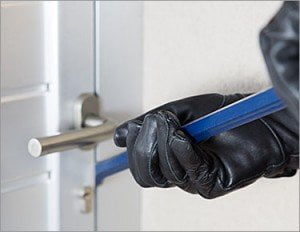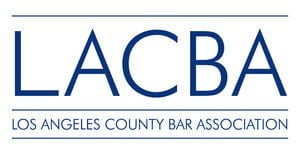Burglary is commonly understood as stealing something from a home or business. But it actually refers to the act of entering a place for the purpose of either taking something or committing another type of crime which is a felony.

It is also worth noting that forcible entrance is not a required element of burglary. For example, walking through the open public entrance of a building with the intention to commit a crime within can potentially constitute burglary.
California Penal Code 459 makes it unlawful to commit burglary, which is defined as entering a structure or vehicle with the intent to commit larceny (theft) or some other felony crime.
Burglary is commonly understood as stealing something from a home or business. But it actually refers to the act of entering a place for the purpose of either taking something or committing another type of crime which is a felony. In other words, if someone enters a structure or building with the intent to steal or commit a felony, but does not actually follow through on their intention, they still have committed burglary.
Elements of the crime of burglary
Even opening a door with a key can be considered burglary, if entry was made with the intention of committing a theft or felony.
To obtain a conviction for a charge under 459 PC, the prosecution must prove the following elements beyond a reasonable doubt:
- The defendant entered a room, building, other structure, or vehicle.
- The defendant had the intent to commit theft or a felony offense.
It is important to note that the defendant must have had the intent to commit a theft or felony at the timethey entered the place in question. If the defendant decided to commit a felony or theft at a later time after having entered the building or vehicle, a burglary did not occur.
It is also worth noting that forcible entrance is not a required element of burglary. Walking through the open public entrance of a building with the intention to commit a crime within can potentially constitute burglary.
Differences between first-degree and second-degree burglary
Burglary is divided into first- and second-degree offenses. First-degree burglary involves an inhabited residence, which can be, but is not limited to:
- A private residence such as a house, condominium, or apartment.
- A room within a private residence.
- A boat, yacht, house boat, or a “floating home”
- A recreational vehicle, trailer coach, or mobile home.
- A room in a motel, hotel, resort, or a rented cabin.
- Any other portion of an inhabited structure or vehicle.
Under the law, inhabited means that someone lives in the structure in question. The inhabitant(s) need not be present for the offense to qualify as a burglary.
Second-degree burglary involves any other type of structure which is not inhabited; this commonly includes stores, businesses, warehouses, and the like.
Related offenses
Shoplifting – 459.5 PC
As defined by 459.5 PC, the elements of the offense of shoplifting are:
- Entering a commercial establishment during normal business hours.
- Entering with the intent to commit theft of property valued at $950 or less (petty larceny).
Shoplifting is a misdemeanor charge unless the defendant has a prior conviction for a serious felony or is required to register as a sex offender. If the defendant has a qualifying prior conviction or intended to take property valued at more than $950, they can be charged with felony second-degree burglary.
Possession of burglary tools – 466 PC
Possession of certain tools which could be used to facilitate a burglary is a criminal offense when the individual with the tools has the intention to commit a burglary. Under this statute, burglary tools include, but are not limited to:
- Screwdrivers
- Crowbars
- “Slim Jims”
- Bolt cutters
- A fabricated or altered key made without consent of the person in rightful control of the property the key unlocks.
Simply having such tools is not a crime – it only becomes a crime when the person intends to use them to enter a home, business, or vehicle to commit a theft or other felony. 466 PC is a misdemeanor offense.
Robbery – 211 PC
A defendant can be charged with both burglary and robbery if they entered a structure belonging to another person, used fear or force to take property, and had the intent to do so at the time of entry. For example, if someone entered a house at night intending to take cash or other goods while the occupants were away from home, but encountered the homeowners and took property from them at knifepoint, the defendant could be charged with both burglary and robbery. Robbery is a felony offense.
Trespass – 602 PC
Trespass occurs when an individual enters another person’s property without permission or the right to do so. Trespass differs from burglary in that it centers on the property owner’s lack of consent to the perpetrator’s presence on his or her property, while burglary hinges upon the perpetrator’s intent to commit a crime when they entered the property. Trespass is a misdemeanor and, in some cases, may be charged as an infraction with even lighter penalties.
Safe blowing/burglary with explosives – 464 PC
If the defendant entered a structure and then attempted to open a safe, vault, or other secured place within said structure with the aid of explosives, a torch, or related items, they have violated 464 PC. This offense is a felony.
Criminal penalties for burglary under 459 PC
In California, first-degree burglary is a felony with any or all of the following penalties:
- Two to six years in state prison.
- A fine of up to $10,000.
- Formal probation.
- A strike under California’s Three Strikes law.
In contrast, second-degree burglary is a wobbler – meaning it can be charged as either a misdemeanor or a felony. Misdemeanor penalties for second-degree burglary include any or all of:
- Up to one year in jail.
- A fine of up to $1,000.
- Summary probation.
Felony second-degree burglary carries any or all of the following penalties:
- 16 months to three years in state prison.
- A fine of up to $10,000.
- Formal probation.
Legal defenses
A conviction for burglary under 459 PC carries potentially severe penalties, and anyone accused of this offense should immediately seek legal advice from a qualified attorney. Determining an effective legal defense requires a close examination of the facts and circumstances of the alleged crime. However, common defenses to this charge include:
- Lack of intent.
- Mistake of fact or claim of right; for example, the accused entered with the intention to take back property that was rightfully theirs, or to take property with the owner’s permission.
- Mistaken identity.
- Police misconduct or unlawful search and seizure.









